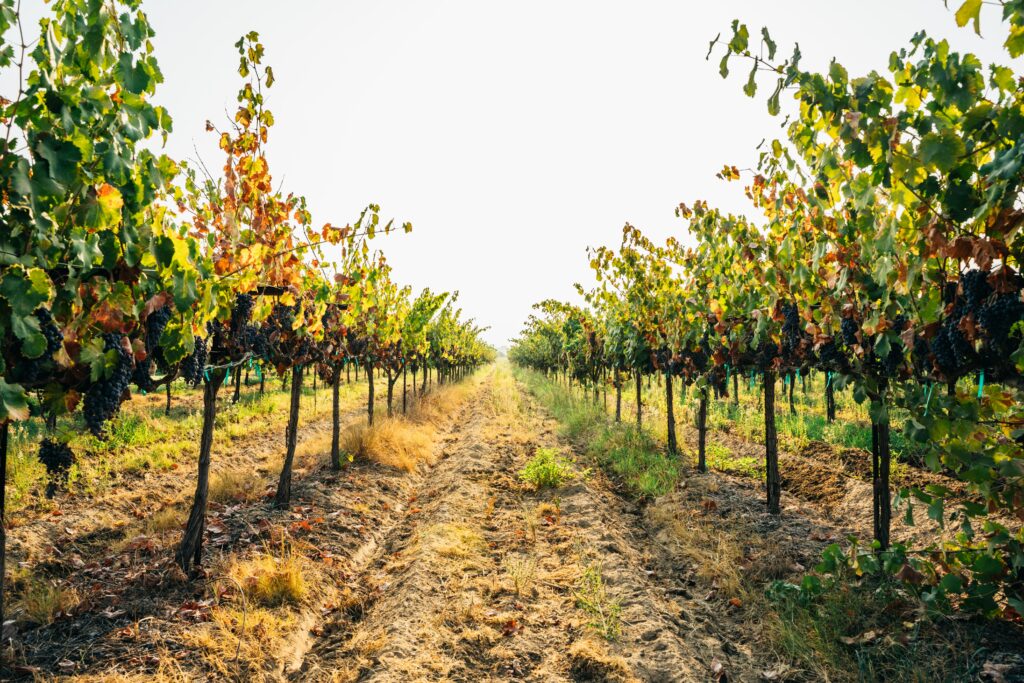
The Soil’s Influence on Grape Quality
Texas wine has been gaining recognition in recent years, with many wineries producing award-winning wines. One factor that contributes to the unique flavors of Texas wine is the soil in which the grapes are grown. The concept of terroir, which refers to the environmental factors that influence the character of a wine, including soil, climate, and topography, is particularly relevant in the context of Texas wine.
The diverse soil types found in Texas, including sandy loam, limestone, and granite, contribute to the distinctive flavors and aromas of Texas wine. For example, grapes grown in sandy soil tend to produce wines with lighter body and lower tannins, while those grown in limestone soil may result in wines with higher acidity and minerality. Understanding the influence of soil on wine is essential for winemakers to produce high-quality wines that reflect the unique terroir of their region.
In this article, we will explore the relationship between Texas wine and terroir, with a focus on the role of soil in shaping the flavors and aromas of Texas wine. We will examine the different soil types found in Texas and their impact on wine, as well as the techniques used by Texas winemakers to cultivate grapes that reflect the unique terroir of their vineyards. By the end of this article, readers will have a better understanding of the importance of soil in the production of high-quality Texas wine.
Understanding the Concept of Terroir
Terroir is a French term that refers to the environmental factors, including soil, climate, and topography, that influence the taste, aroma, and character of wine. This concept is essential in the world of wine as it highlights the unique characteristics of a wine that are derived from the vineyard’s location and the environmental factors that affect the grapes’ growth.
The sense of place is a critical component of the terroir concept. It refers to the unique characteristics of a vineyard that are derived from the physical and cultural environment in which it is located. This includes the soil type, climate, topography, and other environmental factors that influence the grapes’ growth.
The vineyard is the primary source of a wine’s terroir. The vineyard’s location, soil, and climate all play a crucial role in shaping the wine’s character. The vineyard’s ecosystem, including the plants, animals, and microorganisms that inhabit it, also influences the wine’s taste and aroma.
The microclimate is an essential component of terroir. It refers to the climate conditions that exist within a small area, such as a vineyard or even a single row of vines. Microclimates can vary significantly within a vineyard, depending on factors such as altitude, slope, and exposure to the sun. These variations can have a significant impact on the grapes’ ripening process, which, in turn, affects the wine’s taste and aroma.
Environmental factors, such as rainfall, temperature, and sunlight, also play a crucial role in shaping a wine’s terroir. These factors can vary significantly from year to year, resulting in different wine characteristics from one vintage to the next.
In summary, the terroir concept is a critical component of the wine industry. It highlights the unique characteristics of a wine that are derived from the vineyard’s location and the environmental factors that affect the grapes’ growth. Understanding the terroir of a wine can help wine enthusiasts appreciate the wine’s unique character and sense of place.
Scientific Evidence and Studies
Scientific evidence has shown that the soil in which grapes are grown has a significant impact on the characteristics of the wine produced. Chemical analysis of the soil can reveal the presence of minerals and nutrients that are essential for grapevine growth and can influence the flavor, aroma, and texture of the wine.
Studies have been conducted to investigate the relationship between soil characteristics and wine terroir. For example, a study published in Frontiers in Environmental Science found that soil knowledge is crucial in understanding wine terroir. The study explored the concept of terroir and concluded that the soil is a critical factor in the expression of terroir in wine.
Another study published in Frontiers in Microbiology evaluated the impact of environmental variables on the soil bacteria of 22 vineyards in the Bordeaux region. The study found that the composition of the soil microbiome was influenced by the vineyard’s location, soil type, and management practices. The study also found that the soil microbiome was associated with the wine’s sensory characteristics.
Chemical analysis of the soil can provide valuable information about the minerals and nutrients present in the soil. A study published in the Journal of Agricultural and Food Chemistry found that the concentration of minerals in the soil was positively correlated with the concentration of minerals in the wine. The study also found that the concentration of minerals in the wine was positively correlated with the wine’s sensory characteristics.
Overall, scientific evidence and studies have demonstrated that the soil’s influence on wine terroir is significant. Chemical analysis of the soil can provide valuable information about the minerals and nutrients present in the soil, which can influence the flavor, aroma, and texture of the wine.
The Influence of Soil on Texas Wine
The soil in which grapes are grown plays an essential role in the quality and flavor of Texas wine. Texas has a diverse range of soils, including clay, sand, gravel, granite, limestone, and more. Each soil type has unique properties that affect the wine’s character and terroir.
Soil properties such as alkalinity, drainage, and mineral content can significantly impact the growth and development of grapevines. Sandy soils, for example, have excellent drainage but are low in fertility, while clay soils retain moisture but can be prone to waterlogging. Vineyard geology, including bedrock and soil type, sets the context for the physical landscape, determining where hills and plains develop and where favored vineyard sites are located.
The soil microbiome, including soil bacteria and microbial terroir, also plays a crucial role in wine terroir expression. Recent research has shown that unique strains of the natural yeast Saccharomyces cerevisiae can influence must fermentations to produce distinctive aroma profiles in wines. The microbial terroir of the soil can also affect the wine’s taste and aroma.
Soil organic matter, including decomposed plant and animal material, can improve soil fertility and structure, which can contribute to better grapevine growth. Soil organic matter also helps to retain moisture and nutrients, promoting healthy vine growth and improving the wine’s flavor.
In Texas, vineyard soils are diverse, ranging from sandy soils in the High Plains to granite soils in the Hill Country. The soil’s influence on Texas wine is complex and multifaceted, with many factors, including soil type, soil properties, soil microbiome, and soil organic matter, all playing a role in the wine’s character and terroir. Understanding the influence of soil on Texas wine is essential for winemakers and wine enthusiasts alike.

Climate and Weather Impact
The climate and weather of a region play a vital role in the growth and quality of wine grapes. Texas has a warm and dry climate, which is ideal for growing grapes. However, the state is also prone to extreme weather conditions, such as hailstorms, tornadoes, and droughts, which can damage the vines and affect the quality and yield of the grapes.
The temperature and rainfall patterns of a region also affect the ripening process of the grapes. In Texas, the hot summers and mild winters provide a long growing season, which allows the grapes to ripen fully. However, excessive heat can lead to sunburnt grapes and lower acidity, while too much rain can cause the grapes to swell and dilute their flavors.
The microclimate of a vineyard, which is influenced by factors such as elevation, slope, and proximity to water bodies, also plays a crucial role in the quality of the grapes. For example, vineyards situated on slopes receive better drainage and airflow, which can prevent fungal diseases and improve the quality of the grapes.
The climatic conditions of a region can also affect the types of grape varieties that can be grown successfully. Texas is known for its warm-climate grape varieties, such as Tempranillo, Mourvèdre, and Viognier, which thrive in the state’s hot and dry conditions. However, cooler regions of Texas, such as the Texas Hill Country, can also grow cool-climate grape varieties, such as Pinot Noir and Chardonnay, due to their higher elevation and cooler temperatures.
Overall, the climate and weather of Texas have a significant impact on the growth and quality of wine grapes. Vineyard managers and winemakers must carefully monitor and manage these factors to ensure that the grapes reach their full potential and produce high-quality wines.
The Role of Vines and Grapes
The quality of grapes is paramount to producing high-quality wine, and the type of grapevine cultivar is an essential factor in grape production. Different grapevine cultivars have varying levels of resistance to pests, diseases, and environmental stressors, and some cultivars are better suited to specific soil types.
In Texas, grape growers primarily cultivate grape varieties such as Cabernet Sauvignon and Pinot Noir, which are known for their high quality and unique flavor profiles. These grape varieties are also highly susceptible to environmental stressors, such as drought and extreme heat, which can affect the quality of the grapes produced.
The physical environment in which the vines grow, including the soil type, climate, and topography, also plays a crucial role in grape growing. The soil type can affect the nutrient composition of the grapevine, which can impact the flavor and aroma of the grapes produced. For example, sandy loam soil over limestone is the predominant soil type on the Texas High Plains, where about 73 percent of Texas wine grapes are grown. This soil type is known for its mineral-rich composition, which can contribute to the unique flavor profile of Texas wines.
In addition to the physical environment, the grapevine cultivar also plays a significant role in the terroir of a wine. The grapevine cultivar can influence the grape’s ripening rate, acidity, and sugar content, which can impact the flavor and aroma of the wine produced. For example, Pinot Noir is known for its low tannin levels and high acidity, which can contribute to its fruity and floral flavor profile.
Overall, the role of vines and grapes in Texas wine production is crucial to producing high-quality wines with unique flavor profiles. The grapevine cultivar, soil type, and physical environment all play a vital role in the terroir of a wine, and grape growers must carefully consider these factors when cultivating their grapevines.
Cultivation and Management Practices
The cultivation and management practices of vineyards play a crucial role in the quality of the wine produced. Growers in Texas have adopted various practices to ensure that their grapes are of the best quality.
One of the management practices adopted by Texas growers is the use of cover crops. Cover crops help to improve soil health by preventing soil erosion, increasing soil organic matter, and reducing weed growth. The use of cover crops also helps to reduce the need for herbicides, which can negatively impact soil health.
Another important aspect of vineyard management is irrigation. Texas has a semi-arid climate, and irrigation is necessary for grape production. Growers use different irrigation methods, including drip irrigation and overhead sprinklers. The choice of irrigation method depends on factors such as soil type, water supply, and grape variety.
Nutrition is also an essential factor in vineyard management. Soil nutrient deficiencies can result in poor grape quality and low yields. Growers in Texas use different fertilizers to provide the necessary nutrients for grape production. Nitrogen is one of the most important nutrients required by grapevines, and growers often use nitrogen fertilizers to ensure adequate nitrogen supply.
In addition to nitrogen, grapevines require other mineral nutrients such as phosphorus, potassium, calcium, and magnesium. Growers use soil tests to determine the nutrient status of their soils and apply fertilizers accordingly.
Overall, the cultivation and management practices adopted by Texas growers play a critical role in the quality and quantity of grapes produced. By adopting sustainable practices such as cover cropping, appropriate irrigation, and proper nutrition, growers can ensure that their vineyards produce high-quality grapes year after year.
Diversity and Variability in Texas Wine
Texas wine regions are diverse, with varying topography and soils that contribute to the unique terroir of each region. The state is larger than France, and its wine regions are spread across the state, from the Texas High Plains to the Texas Davis Mountains.
The diversity of Texas wine is evident in the range of grape varieties grown in the state. Texas is home to over 30 grape varieties, including traditional European varieties like Tempranillo, Cabernet Sauvignon, and Chardonnay, as well as lesser-known varieties like Blanc du Bois and Black Spanish. This diversity of grape varieties allows winemakers to experiment and create unique blends that reflect the terroir of their vineyards.
Spatial variability is another factor that contributes to the diversity of Texas wine. The state’s vast size and varying topography result in different microclimates and soil types that can significantly impact the flavor profile of the grapes grown. For example, the Texas High Plains AVA has red sandy soils that allow for excellent drainage, resulting in grapes with high acidity and intense fruit flavors. In contrast, the Texas Hill Country AVA has limestone soils that contribute to the minerality and complexity of the wines produced there.
Clone selection also plays a role in the diversity of Texas wine. Winemakers can select specific clones of grape varieties that are better suited to their vineyard’s terroir, resulting in wines with unique flavor profiles. For example, the Tempranillo grape has over 100 clones, each with its own unique characteristics.
Texas wine is not limited to one color either. The state produces both red and white wines, each with its own unique flavor profile. Red wines like Tempranillo and Cabernet Sauvignon are known for their bold, rich flavors, while white wines like Chardonnay and Viognier are known for their crisp acidity and fruity aromas.
Finally, Texas wine is produced in different appellations, each with its own unique terroir. The state has eight AVAs, each with its own distinct climate, soil type, and topography. These AVAs include the Texas Hill Country, Texas High Plains, and Texas Davis Mountains.
Overall, the diversity and variability of Texas wine make it an exciting and unique wine region to explore.
The Sensory Experience of Texas Wine
Texas has emerged as a major player in the wine industry, producing some of the most unique and flavorful wines in the world. The terroir of Texas, which includes the soil, climate, and topography, plays a crucial role in the flavor and sensory characteristics of its wines.
The soil in Texas is diverse, ranging from sandy loam to clay to limestone. This diversity contributes to the unique flavors and aromas found in Texas wines. For example, wines grown in the sandy loam soil of the Texas High Plains tend to have a bright acidity and fruity flavors, while wines grown in the limestone-rich soil of the Hill Country have a mineral and earthy character.
The sensory characteristics of Texas wines vary depending on the grape variety and the region in which it is grown. For example, Texas Cabernet Sauvignon tends to have a bold and full-bodied flavor with notes of blackberry and cassis, while Texas Tempranillo has a medium-bodied flavor with notes of cherry and spice.
Mouthfeel is another important aspect of the sensory experience of Texas wine. The tannin levels in Texas wines can vary, with some wines having a soft and silky mouthfeel while others have a more astringent and grippy mouthfeel.
Sommeliers have taken notice of the quality and uniqueness of Texas wines. Many Texas wineries have received awards and recognition from top sommeliers and wine competitions. The Texas wine industry continues to grow and evolve, with new wineries and vineyards popping up across the state.
In conclusion, the sensory experience of Texas wine is a reflection of the terroir of Texas, including the soil, climate, and topography. With its diverse soil types and unique grape varieties, Texas wines offer a range of flavors, aromas, and mouthfeel that are sure to delight any wine enthusiast.



